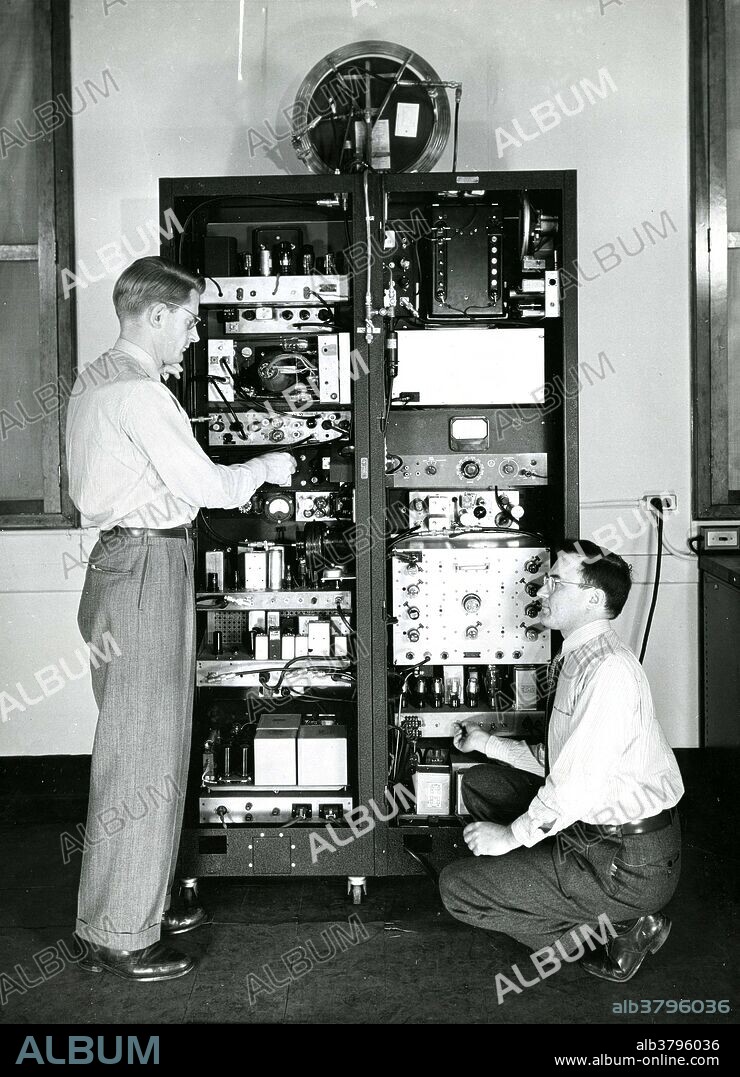alb3796036
Ammonia MASER, First Atomic Clock

|
Añadir a otro lightbox |
|
Añadir a otro lightbox |



¿Ya tienes cuenta? Iniciar sesión
¿No tienes cuenta? Regístrate
Compra esta imagen.
Selecciona el uso:

Título:
Ammonia MASER, First Atomic Clock
Descripción:
Ver traducción automática
Back side of ammonia molecule clock with B. F. Husten and E. D. Heberling. An atomic clock is a clock device that uses an electronic transition frequency in the microwave, optical, or ultraviolet region of the electromagnetic spectrum of atoms as a frequency standard for its timekeeping element. The principle of operation of an atomic clock is not based on nuclear physics, but rather on atomic physics; it uses the microwave signal that electrons in atoms emit when they change energy levels. The idea of using atomic transitions to measure time was first suggested by Lord Kelvin in 1879. Magnetic resonance, developed in the 1930s by Isidor Rabi, became the practical method for doing this. In 1945, Rabi first publicly suggested that atomic beam magnetic resonance might be used as the basis of a clock. The first atomic clock was an ammonia maser (microwave amplification by stimulated emission of radiation) device built in 1949 at the U.S. National Bureau of Standards (NBS, now NIST). The world's first atomic clock using the ammonia molecule as the source of vibrations.
Personas:
Crédito:
Album / NIST/Science Source
Autorizaciones:
Tamaño imagen:
3034 x 4200 px | 36.5 MB
Tamaño impresión:
25.7 x 35.6 cm | 10.1 x 14.0 in (300 dpi)
Palabras clave:
BLANCO Y NEGRO • CIENCIA • EXACTA • EXACTITUD • FÍSICA (CIENCIA) • FOTO • FOTOGRAFIA • HOMBRES • INSTRUMENTO • MAQUINA • METROLOGIA • NATIONAL BUREAU OF STANDARDS • PRECISION • RELOJ • S. XX • SIGLO XX • TECNOLOGÍA • TECNOLÓGICA


 Pinterest
Pinterest Twitter
Twitter Facebook
Facebook Copiar enlace
Copiar enlace Email
Email
